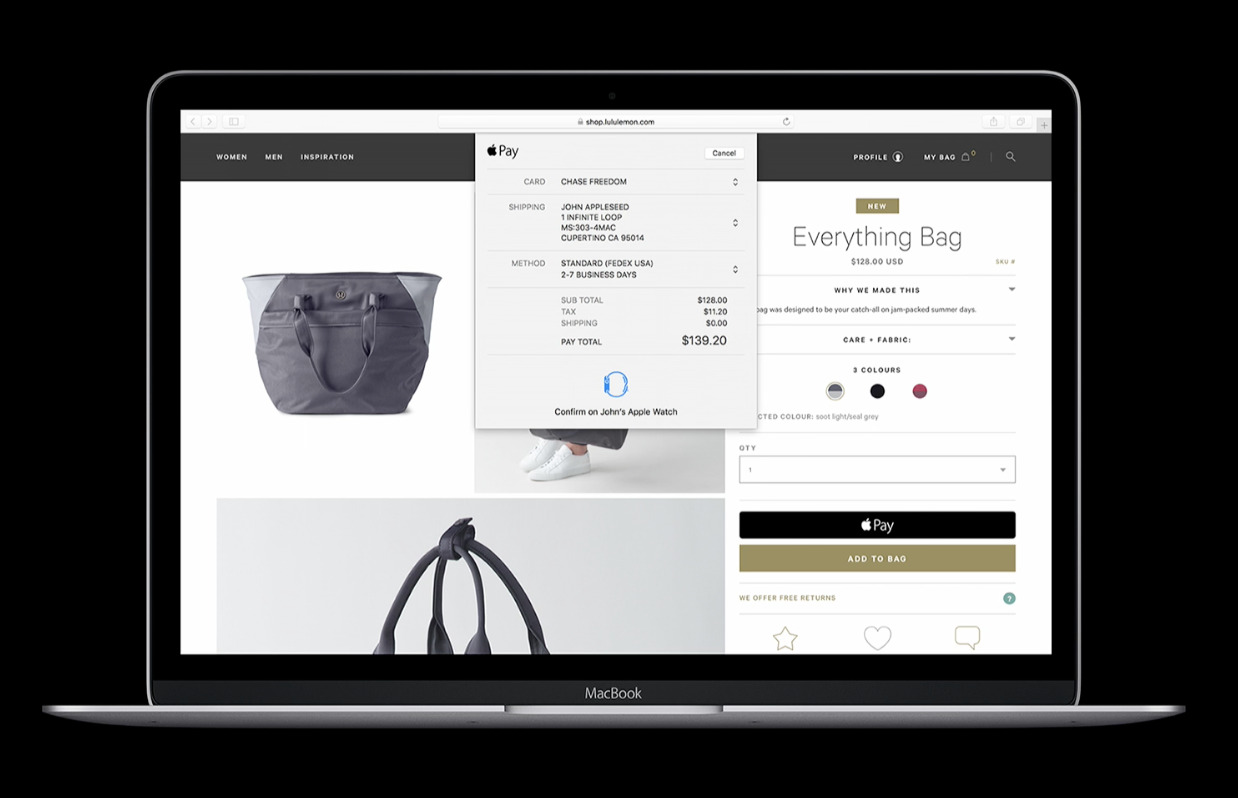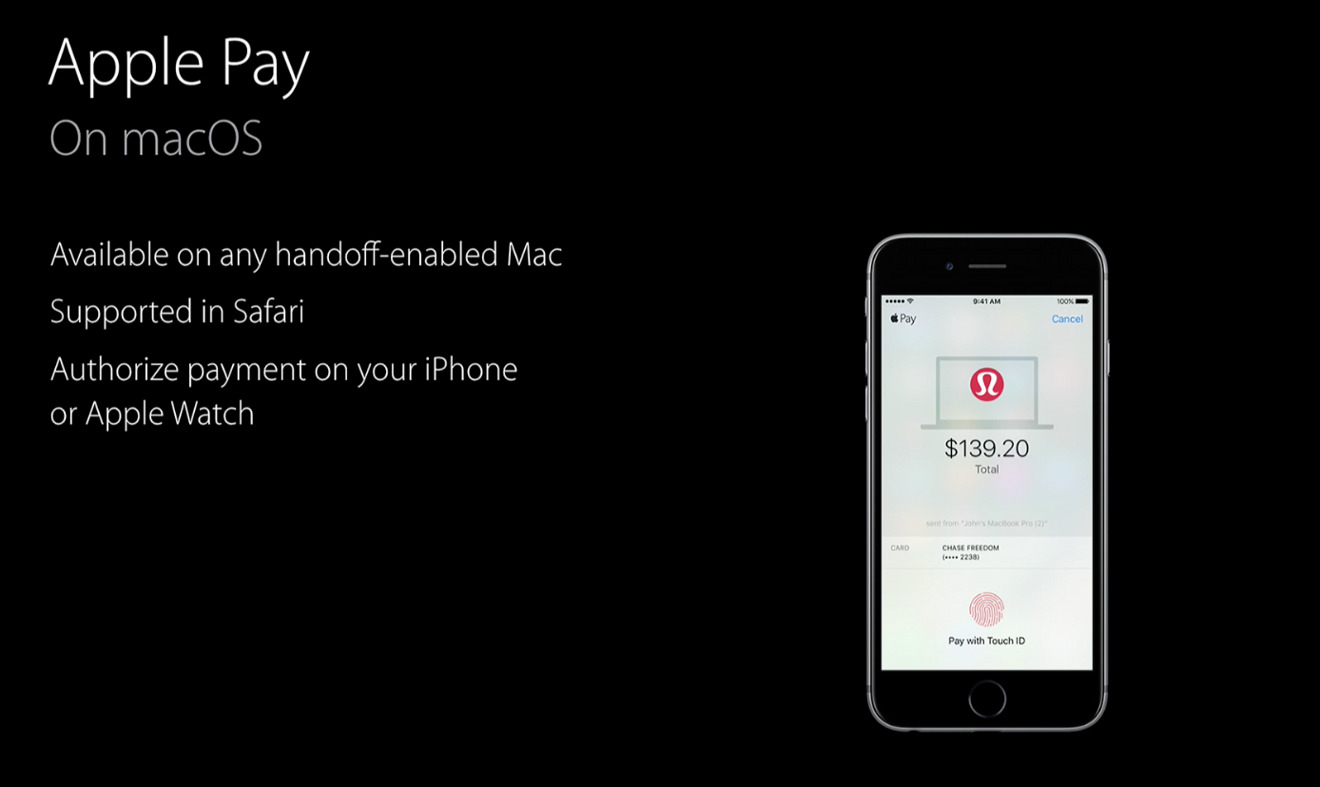Convenience and brand recognition should help Apple Pay on the web pose a serious threat to PayPal right out of the gate, a new analysis predicts, forecasting that Apple's new browser-based payment service will see a major overlap with PayPal acceptance when it launches this fall.
Analyst Gene Munster of Piper Jaffray spoke with developers and industry partners, who signaled that Apple Pay's forthcoming browser integration will be simple and will compare feature-for-feature with PayPal checkout.
Munster noted that 21 of the top 100 online retailers have already pledged support for Apple Pay at launch, and he believes another 10 will be ready soon after. In comparison, the longstanding PayPal service is accepted at 54 of the top 100 online retailers, including Office Depot, Target, HSN, Overstock.com, and J.C Penney.
Dubbed "Pay with Apple Pay," Apple announced that its web-based payment service will launch as part of its Safari browser this fall. Users will see an Apple Pay button during checkout with supporting merchants, and simply authorize the transaction via Continuity using Touch ID on their iPhone, or with a currently-worn, unlocked Apple Watch. It will be available on any Mac running macOS Sierra.
Munster has confidence in merchant adoption of Apple Pay for the web, predicting that as many as 43 percent of PayPal's merchants will accept Apple Pay at launch. In addition, Piper Jaffray estimates that about 30 percent of PayPal's transaction volume is already authorized via Apple devices.
"We do not believe online retailers will shy away from Apple Pay because of a 'cluttering' problem, as placing a well-trusted brand alongside existing checkout options will likely improve overall conversion," he wrote.
As for consumers, Munster believes a "significant portion of PayPal users" will elect to use Apple Pay over PayPal when given a choice of both. He believes that PayPal may be hurt, in part, by the fact that it does not feature a customer loyalty program.
"Consumers are incentivized to simplify their lives and Apple Pay reduces the ecosystem of platforms they interact with," Munster wrote. "When faced with identically sized buttons next to each other, we believe Apple Pay will begin taking share."
Apple Pay launched in late 2014 as a service for both point-of-sale tap-to-pay transactions, as well as in-app purchases. It relies on a secure enclave for credit card data found in newer Apple hardware, like the iPhone 6s and Apple Watch, and it relies on a tokenization system that helps to prevent credit card fraud.
To date, without support on the web, Apple Pay adoption is estimated to be at 12 million active users per month. In contrast, PayPal was estimated to have 116 million active accounts, accounting for $10.9 billion in transactions as of the first quarter of 2016.
 Mike Wuerthele
Mike Wuerthele








-m.jpg)






 William Gallagher
William Gallagher
 Charles Martin
Charles Martin
 Christine McKee
Christine McKee
 Wesley Hilliard
Wesley Hilliard
 Malcolm Owen
Malcolm Owen
 Andrew Orr
Andrew Orr

 Sponsored Content
Sponsored Content







49 Comments
That's for sure.
It is easier to use, more secure and more flexible.
PayPal works, but in the past when I've had issues their support was so bad it's not funny. I literally got locked out of my account for 3 months through no fault of my own because that was their policy.
Does Apple plan to expand this to support non-Safari browsers on Windows? (Chrome, Firefox, etc.) I assume not, since a Windows PC can't support Continuity to a Touch ID-enabled device for user authentication.